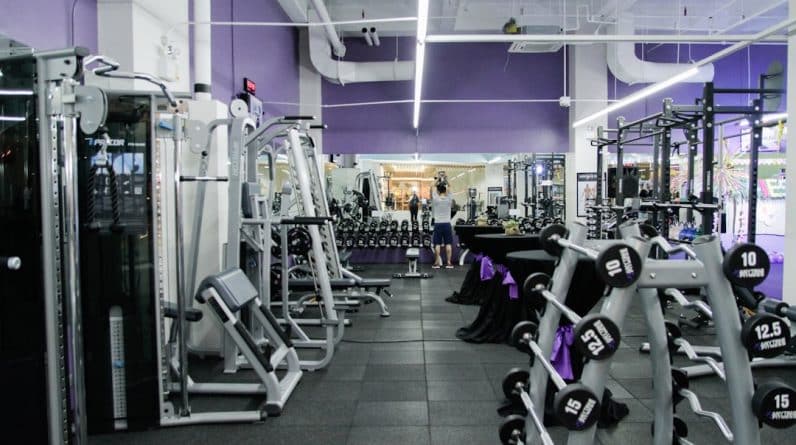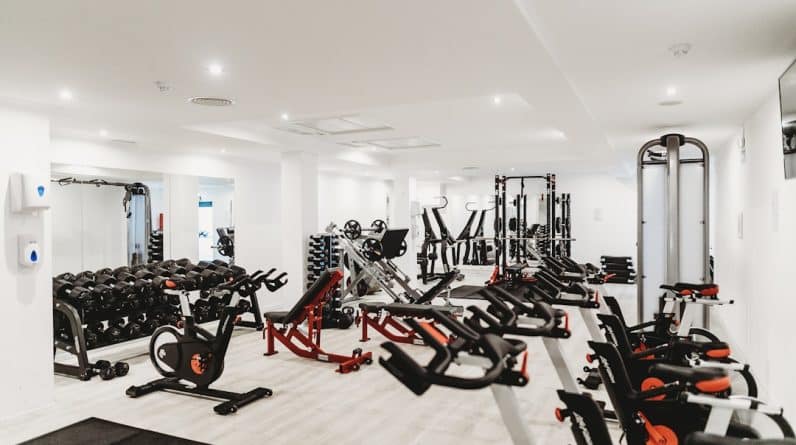
Fitness is a multifaceted concept that encompasses various components essential for overall health and well-being. When you think about fitness, it’s easy to focus solely on aesthetics or the number on a scale. However, true fitness goes beyond mere appearance; it involves a holistic approach that includes cardiovascular health, muscular strength, flexibility, and body composition.
Understanding these components can empower you to create a balanced fitness routine that not only enhances your physical appearance but also improves your quality of life. As you embark on your fitness journey, it’s crucial to recognize that each component plays a unique role in your overall health. By integrating all aspects of fitness into your routine, you can achieve a well-rounded approach that promotes longevity and vitality.
This article will delve into the various types of fitness, their benefits, and how you can seamlessly incorporate them into your daily life.
Key Takeaways
- Fitness is a crucial aspect of overall health and well-being, encompassing cardiovascular fitness, muscular strength and endurance, flexibility, and body composition.
- Cardiovascular fitness focuses on the health of the heart and lungs, and can be improved through activities like running, swimming, and cycling.
- Muscular strength and endurance are important for everyday tasks and can be enhanced through weightlifting, resistance training, and bodyweight exercises.
- Flexibility is essential for preventing injuries and can be increased through stretching, yoga, and Pilates.
- Body composition refers to the ratio of muscle, fat, and other tissues in the body, and can be improved through a combination of proper nutrition and exercise.
Cardiovascular Fitness
Cardiovascular fitness is often regarded as the cornerstone of any fitness regimen. It refers to the efficiency with which your heart, lungs, and blood vessels work together to supply oxygen to your muscles during physical activity. Engaging in cardiovascular exercises, such as running, cycling, or swimming, can significantly enhance your endurance and stamina.
When you elevate your heart rate through these activities, you not only improve your cardiovascular health but also boost your metabolism, making it easier to maintain a healthy weight. Incorporating cardiovascular fitness into your routine can be both enjoyable and rewarding. You might find that activities like dancing or hiking not only elevate your heart rate but also provide a sense of joy and accomplishment.
As you engage in regular cardiovascular workouts, you may notice improvements in your energy levels and mood, thanks to the release of endorphins—those feel-good hormones that can help combat stress and anxiety. By prioritizing cardiovascular fitness, you set the foundation for a healthier lifestyle.
Muscular Strength and Endurance

Muscular strength and endurance are vital components of fitness that often go hand in hand. Strength refers to the maximum amount of force your muscles can exert in a single effort, while endurance is the ability of your muscles to sustain repeated contractions over time. Engaging in resistance training exercises, such as weightlifting or bodyweight workouts, can significantly enhance both strength and endurance.
As you challenge your muscles with progressive overload, you stimulate growth and improve your overall functional capacity. Incorporating strength training into your routine not only helps you build muscle but also supports bone health and metabolic function. You may find that as you increase your strength, everyday tasks become easier—whether it’s lifting groceries or climbing stairs.
Additionally, strength training can have a positive impact on your mental health by boosting self-esteem and confidence. As you witness your progress over time, you may feel empowered to tackle new challenges both in and out of the gym.
Flexibility
Flexibility is often an overlooked aspect of fitness, yet it plays a crucial role in maintaining overall health and preventing injuries. It refers to the range of motion available at your joints and is influenced by factors such as muscle length and connective tissue elasticity. Engaging in flexibility exercises, such as stretching or yoga, can enhance your mobility and improve your posture.
As you work on your flexibility, you may find that everyday movements become more fluid and comfortable. Incorporating flexibility training into your routine can also have mental benefits. The practice of stretching or participating in yoga encourages mindfulness and relaxation, allowing you to connect with your body on a deeper level.
You might discover that dedicating time to flexibility not only enhances your physical capabilities but also provides a much-needed respite from the stresses of daily life. By prioritizing flexibility, you create a balanced approach to fitness that supports both physical and mental well-being.
Body Composition
Body composition refers to the proportion of fat mass to lean mass in your body. It’s an important indicator of health that goes beyond what the scale shows. Understanding your body composition can help you set realistic fitness goals and track your progress more effectively.
A healthy body composition typically involves a higher percentage of lean mass—muscles, bones, organs—compared to fat mass. Achieving an optimal body composition often requires a combination of regular exercise and a balanced diet. To improve your body composition, focus on incorporating both cardiovascular and strength training into your routine while paying attention to your nutritional choices.
You may find that as you build muscle through resistance training, your metabolism increases, allowing you to burn more calories even at rest. Additionally, adopting a balanced diet rich in whole foods can support your efforts in achieving a healthier body composition. By understanding the importance of body composition, you empower yourself to make informed choices that contribute to long-term health.
Benefits of Each Type of Fitness

Each component of fitness offers unique benefits that contribute to overall well-being. Cardiovascular fitness enhances heart health, increases lung capacity, and improves circulation. As you engage in regular aerobic activities, you may experience increased energy levels and improved mood due to the release of endorphins.
Furthermore, cardiovascular exercise can help reduce the risk of chronic diseases such as heart disease and diabetes. Muscular strength and endurance provide functional benefits that extend into daily life. By building strength, you enhance your ability to perform everyday tasks with ease while reducing the risk of injury.
Additionally, improved muscular endurance allows you to engage in physical activities for longer periods without fatigue. This can lead to greater enjoyment in recreational pursuits and an overall enhanced quality of life. Flexibility offers its own set of advantages by promoting better posture and reducing muscle tension.
Improved flexibility can lead to enhanced athletic performance and decreased risk of injury during physical activities. Moreover, incorporating flexibility training into your routine can foster relaxation and stress relief, contributing positively to mental health. Finally, understanding body composition allows you to set realistic goals for yourself while promoting a healthy lifestyle.
By focusing on achieving a balanced ratio of lean mass to fat mass, you can improve not only your physical appearance but also your overall health markers.
How to Incorporate All 4 Types of Fitness into Your Routine
Incorporating all four types of fitness into your routine may seem daunting at first, but with a little planning and creativity, it can be both enjoyable and rewarding. Start by assessing your current fitness level and identifying areas where you would like to improve. From there, create a balanced weekly schedule that includes cardiovascular workouts, strength training sessions, flexibility exercises, and activities that promote healthy body composition.
For example, consider dedicating three days a week to cardiovascular activities such as running or cycling for at least 30 minutes each session. On alternate days, focus on strength training exercises targeting different muscle groups using weights or resistance bands. To enhance flexibility, set aside time for stretching or yoga at least two times a week—this could be incorporated into your warm-up or cool-down routines.
Additionally, pay attention to nutrition as part of achieving a healthy body composition. Aim for a balanced diet rich in whole foods—fruits, vegetables, lean proteins, whole grains—while staying hydrated throughout the day. You might find it helpful to keep a food journal or use apps that track both exercise and nutrition to stay accountable.
In conclusion, embracing a comprehensive approach to fitness is essential for achieving optimal health and well-being. By understanding the importance of cardiovascular fitness, muscular strength and endurance, flexibility, and body composition, you empower yourself to create a balanced routine that supports all aspects of your health. Each component offers unique benefits that contribute not only to physical appearance but also to mental clarity and emotional resilience.
As you embark on this journey toward improved fitness, remember that consistency is key. Set realistic goals for yourself and celebrate small victories along the way. By incorporating all four types of fitness into your routine, you’ll cultivate a lifestyle that promotes longevity and vitality—allowing you to thrive in every aspect of life.
Embrace the process and enjoy the journey toward becoming the healthiest version of yourself!
If you are interested in exploring different types of fitness beyond the traditional categories, you may want to check out this article on martial arts conditioning and techniques. Martial arts can provide a unique and effective way to improve your physical fitness while also learning valuable self-defense skills. Whether you are a beginner or an experienced practitioner, incorporating martial arts into your fitness routine can offer a fun and challenging workout.
FAQs
What are the 4 types of fitness?
The 4 types of fitness are: cardiovascular endurance, muscular strength, muscular endurance, and flexibility.
What is cardiovascular endurance?
Cardiovascular endurance refers to the ability of the heart, lungs, and blood vessels to deliver oxygen to the body’s tissues during prolonged physical activity.
What is muscular strength?
Muscular strength is the ability of a muscle or group of muscles to exert force against resistance.
What is muscular endurance?
Muscular endurance is the ability of a muscle or group of muscles to sustain repeated contractions against a resistance for an extended period of time.
What is flexibility?
Flexibility is the ability of a joint or series of joints to move through a full, pain-free range of motion.





